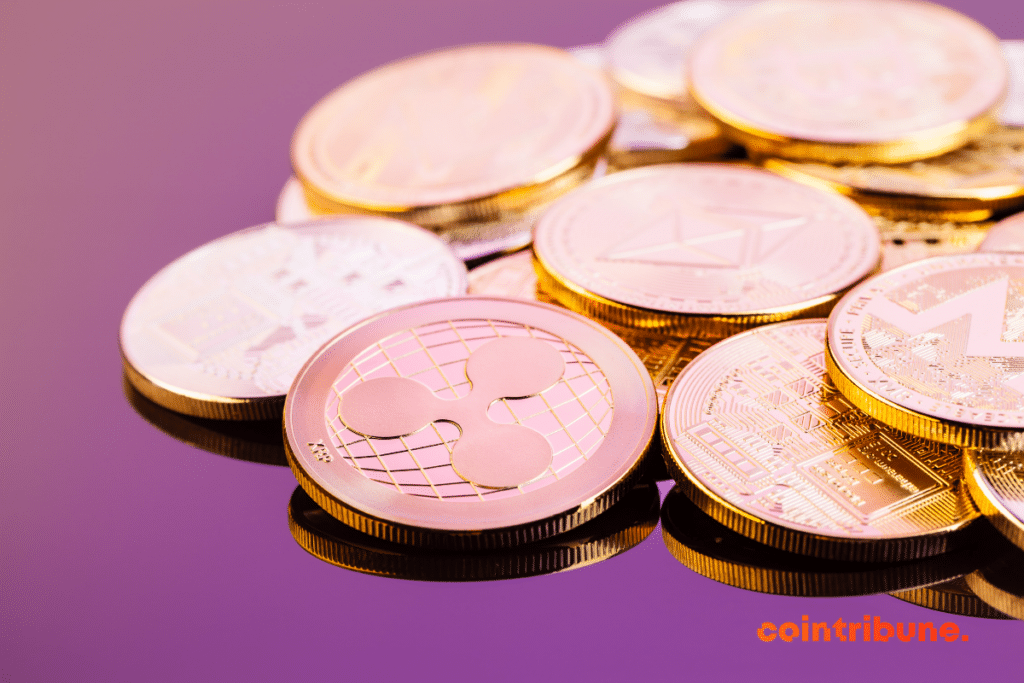How to Analyze the State of the Altcoin Market?
The altcoin market, with its volatility and complexity, represents a fascinating terrain for investors and traders alike. Faced with its volatility and the diversity of factors influencing it, investors and traders must adopt rigorous analysis methods to assess its state. This article unveils the best strategies for studying the altcoin market.

Key Indicators of the Altcoin Market
Thorough analysis is necessary to understand and anticipate movements in the altcoin market. To succeed in this analysis, investors and traders must familiarize themselves with key indicators that influence this market. These indicators provide crucial information for making informed investment and trading decisions.
Trading Volume and Liquidity
Trading volume is a crucial indicator for assessing interest and activity around a specific altcoin. High volume indicates strong trading activity and can be a sign of health for that altcoin. Liquidity, closely related to trading volume, is also to be considered. High liquidity means it is easy to buy or sell the altcoin without causing significant price fluctuations. Altcoins with low trading volume and liquidity may be riskier, as they are prone to market manipulation and abrupt price variations. Investors should monitor these two factors to assess the stability and reliability of an altcoin before engaging in transactions.
Market Capitalization and Market Rank
The market capitalization of an altcoin is another key indicator that offers insight into its overall value in the market. It is calculated by multiplying the current price of the altcoin by its total circulating supply. Altcoins with high market capitalization are often considered more stable and less volatile. An altcoin’s rank in the market, often determined by its market capitalization, provides an overview of its popularity and position relative to other cryptocurrencies. Investors often use market capitalization and rank to identify altcoins with strong growth potential or those already well-established in the market.
Price Trends and Technical Analysis
Analyzing price trends is vital for understanding the behavior of the altcoin market. Investors and traders use various technical analysis tools to identify price patterns and predict future movements. These tools include indicators such as moving averages, the Relative Strength Index (RSI), and Bollinger Bands. Rigorous technical analysis can reveal bullish or bearish trends and help identify optimal entry and exit points for trading. However, it is important to note that technical analysis should be used in conjunction with other indicators and an understanding of the overall market context to be effective.
Tools for Analyzing the Altcoin Market
To navigate effectively in the world of cryptocurrencies, investors and traders rely on various analysis tools. These tools provide crucial data and insights that help understand market trends, assess risks, and make informed investment decisions.
Market Analysis Platforms
Market analysis platforms are essential tools for any altcoin investor. These platforms offer an overview of the market, displaying real-time information on prices, trading volumes, market capitalization, and other key indicators. Platforms like CoinMarketCap or CoinGecko allow users to track the performance of various altcoins, compare their evolution, and detect emerging trends. These sites also provide historical information, which is crucial for long-term trend analysis. Additionally, they often offer additional features such as interactive charts, market analysis, and cryptocurrency-related news, making them comprehensive resources for any serious investor.
Technical Analysis Tools
Technical analysis involves using tools and indicators to evaluate past and current price movements to predict future trends. Some software offers advanced features for technical analysis, including detailed charts, indicators such as moving averages, the Relative Strength Index (RSI), and Bollinger Bands. These tools allow traders to spot price patterns, identify support and resistance levels, and formulate trading strategies based on historical data. Although technical analysis can be complex, it is indispensable for understanding the behavior of the altcoin market and making trading decisions based on solid information.
News Aggregators and Social Networks
In the cryptocurrency space, market information and trends are heavily influenced by news and social networks. News aggregators gather articles, blogs, and updates from various sources, allowing investors to stay informed about the latest developments. Social networks, including Twitter and Reddit, are also valuable sources of information and market sentiment. They provide insights into what the crypto community thinks, which can have a significant impact on market movements. However, it is important to supplement these sources with technical and fundamental analysis to obtain a balanced view of the market.

External Factors and Their Impact
The altcoin market, while largely influenced by internal dynamics, is also sensitive to a variety of external factors. These elements can cause significant fluctuations in altcoin prices and popularity.
Government Regulations and Policies
Government decisions and policies represent one of the most influential external factors on the altcoin market. Regulations regarding cryptocurrencies vary significantly from one country to another, ranging from full adoption to total prohibition. Announcements of new regulations or changes to existing policies can have an immediate impact on the market. For example, a ban on cryptocurrencies in a major country can lead to a rapid price drop, while the adoption of favorable regulations can stimulate investment and increase the value of altcoins. Investors must therefore stay informed about global regulatory developments and assess how these changes may affect their altcoin investments.
Technological Developments and Innovations
Technological advancements and innovations in the field of cryptocurrencies also play a crucial role in the evolution of the altcoin market. The launch of new blockchain technologies, the improvement of existing protocols, or the introduction of new features can increase interest and demand for certain altcoins. For example, the adoption of Proof-of-Stake by Ethereum has generated considerable interest in the cryptocurrency community. Similarly, the emergence of new applications such as smart contracts, non-fungible tokens (NFTs), and decentralized finance (DeFi) has opened up new avenues for the use of altcoins. Investors must monitor these technological developments, as they can offer promising investment opportunities or signal significant changes in the value of altcoins.
Market Sentiment and Media Influence
Market sentiment and media influence are powerful external factors that can affect the altcoin market. News, whether positive or negative, can quickly change investor sentiment and lead to significant market movements. For example, positive media coverage of a specific altcoin can attract new investors and drive up its price, while negative reports or rumors can trigger massive sell-offs. Additionally, influential personalities in the cryptocurrency space, such as entrepreneurs and celebrities, can have a significant impact on the market by expressing their opinions or announcing investments in specific altcoins. Investors must therefore remain attentive to the overall market sentiment and influential news to make informed investment decisions.
Common Pitfalls and Mistakes to Avoid
The altcoin market, with its promises of high returns, attracts many investors. However, this market is also littered with pitfalls and common mistakes that investors must avoid to protect their capital and maximize their chances of success.
Lack of Research and Knowledge
One of the most common pitfalls for new investors is a lack of research and in-depth knowledge of the altcoin market. Investing in altcoins without understanding their fundamentals, such as underlying technology, development team, economic model, and market potential, can lead to poor investment decisions. Many investors are lured by hype or promises of quick gains without properly assessing the risks. It is important to conduct thorough fundamental analysis before investing and to continue to stay informed about market developments and trends. This includes understanding technical aspects, reading whitepapers, and following news and market analysis.
Neglecting Risk Management
Neglecting risk management is another common mistake in the altcoin market. The cryptocurrency market is notoriously volatile, and altcoin prices can fluctuate significantly in a short amount of time. Without a proper risk management strategy, investors may incur significant losses. It is important to set loss limits, use stop-loss orders, and not invest more than one can afford to lose. Diversification of investments is also a key strategy to reduce risks. By spreading investments across different altcoins and asset classes, investors can mitigate the impact of adverse market movements on their overall portfolio.
Falling for Pump-and-Dump Schemes
Pump-and-dump schemes are unfortunately common in the altcoin market. These schemes involve artificially inflating the price of an altcoin by a group of investors before selling massively once other investors have been attracted by the rapid price increase. Investors who join these movements late may incur considerable losses when the price collapses. It is important to remain vigilant and recognize signs of a possible pump-and-dump, such as a sudden and unjustified increase in price or trading volume. Avoiding making investment decisions based on non-organic price movements or exaggerated promotions on social media is also a good precaution to protect against these schemes.
Conclusion
The altcoin market, while promising, requires careful and informed navigation. Investors must engage with a comprehensive understanding of risks, a solid risk management strategy, and constant vigilance against market manipulation. By focusing on thorough research, rigorous risk assessment, and avoiding common mistakes, they can position their investments optimally. Success in the altcoin market depends on the ability to stay informed, prudent, and adaptable in an ever-changing environment.
Maximize your Cointribune experience with our "Read to Earn" program! For every article you read, earn points and access exclusive rewards. Sign up now and start earning benefits.
The Cointribune editorial team unites its voices to address topics related to cryptocurrencies, investment, the metaverse, and NFTs, while striving to answer your questions as best as possible.
The views, thoughts, and opinions expressed in this article belong solely to the author, and should not be taken as investment advice. Do your own research before taking any investment decisions.